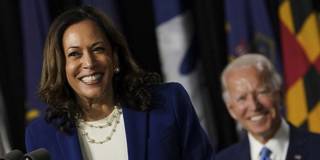As Indian-Americans grow in number, they are becoming an increasingly important voting bloc, helping to elevate their native country's place in the US foreign policy agenda. And while this affluent, highly-educated cohort traditionally has leaned Democratic, it would be a mistake to assume that it is homogeneous.
NEW DELHI – Beyond the major headlines surrounding the US presidential election, a little-noticed development is attracting attention both in India and among American campaign strategists. The rising influence of the Indian-American community in the United States – though barely 1% of the electorate – has made it impossible for the world’s oldest democracy to ignore the world’s largest.
Indian-Americans are the second-largest immigrant group in the US, and among the fastest-growing – up by nearly 150% over the last decade. They also are more affluent and highly educated than any other ethnic group, with a median income nearly double the national average (estimated at $100,000 in 2015). And they have been remarkably active politically, as voters, campaigners, donors, and candidates. In the past two decades, two state governors, one US senator, five members of the House of Representatives, and now a vice presidential candidate have been Americans of Indian descent.
No wonder both major parties are actively courting Indian-American voters, a significant number of whom reside in potential swing states like Texas, Michigan, and Pennsylvania. Both presidential candidates have released television commercials in Indian languages on the leading networks broadcasting Indian programming in the US, and Joe Biden used the Hindu festival of Ganesh Chaturthi to woo Indian-American voters.

NEW DELHI – Beyond the major headlines surrounding the US presidential election, a little-noticed development is attracting attention both in India and among American campaign strategists. The rising influence of the Indian-American community in the United States – though barely 1% of the electorate – has made it impossible for the world’s oldest democracy to ignore the world’s largest.
Indian-Americans are the second-largest immigrant group in the US, and among the fastest-growing – up by nearly 150% over the last decade. They also are more affluent and highly educated than any other ethnic group, with a median income nearly double the national average (estimated at $100,000 in 2015). And they have been remarkably active politically, as voters, campaigners, donors, and candidates. In the past two decades, two state governors, one US senator, five members of the House of Representatives, and now a vice presidential candidate have been Americans of Indian descent.
No wonder both major parties are actively courting Indian-American voters, a significant number of whom reside in potential swing states like Texas, Michigan, and Pennsylvania. Both presidential candidates have released television commercials in Indian languages on the leading networks broadcasting Indian programming in the US, and Joe Biden used the Hindu festival of Ganesh Chaturthi to woo Indian-American voters.